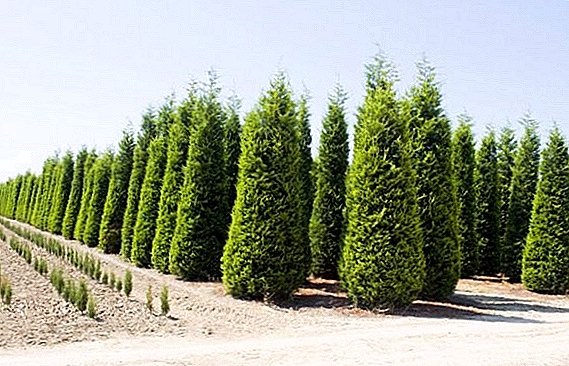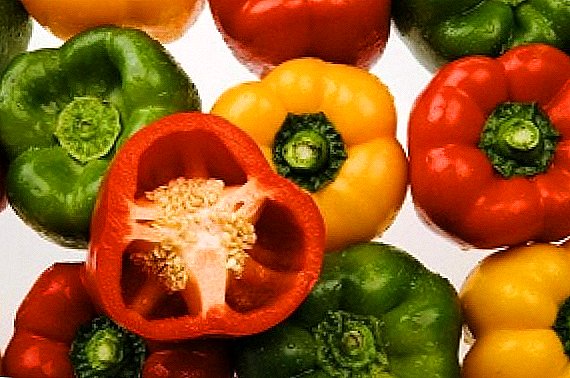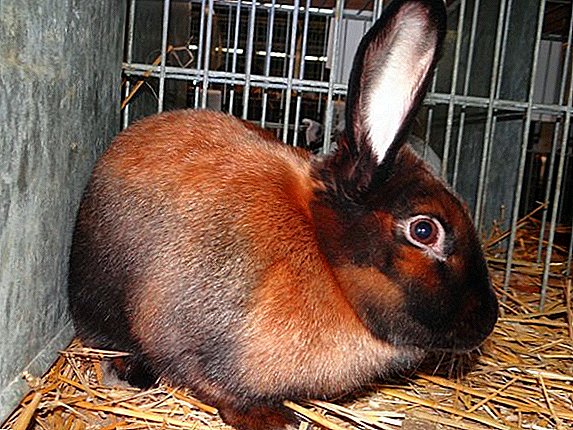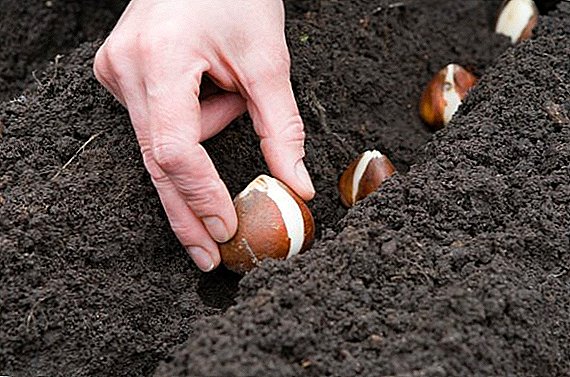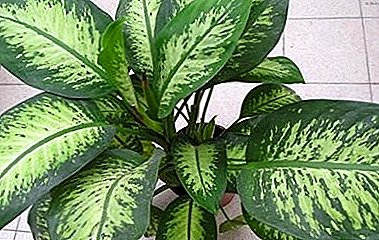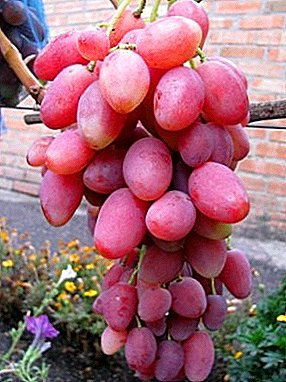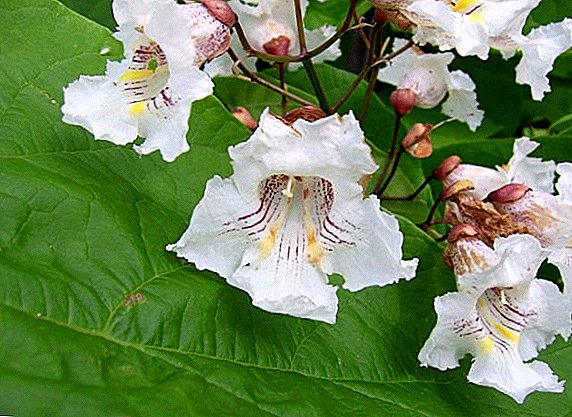 Catalpa - a tree or shrub, which many people want to admire. It comes from North America, where it reaches 10-12 meters in height. Unusually beautiful. Catalpa managed to adapt to the conditions of the Moscow region. Only planting and caring for her in this region have their own characteristics.
Catalpa - a tree or shrub, which many people want to admire. It comes from North America, where it reaches 10-12 meters in height. Unusually beautiful. Catalpa managed to adapt to the conditions of the Moscow region. Only planting and caring for her in this region have their own characteristics.
Acquaintance with the heat-loving southerner
Most species have heart-shaped smooth bright green leaves. They reach a diameter of 25 cm.
Did you know? In the inflorescence of catalpa, there are up to 50 flowers.The fruit of the tree is a pod-box with a length of up to 55 cm. They can persist in some regions on the tree all winter. Flowers are large unusual beauty inflorescences of white or cream color with a pleasant smell of apple. In shape, they look like a chestnut inflorescence.
 The crown of the tree is very dense and wide, the bark on the trunk is fine-fibrous, which has a tendency to crackle. Huge heart-shaped leaves, beautiful inflorescences gave Maya Indians an inspiration to call it “the tree of happiness”.
The crown of the tree is very dense and wide, the bark on the trunk is fine-fibrous, which has a tendency to crackle. Huge heart-shaped leaves, beautiful inflorescences gave Maya Indians an inspiration to call it “the tree of happiness”.The grass under the tree does not grow; the bare place under it, resembling a halo, gave reason to call the catalpa "the heavenly tree."
Did you know? According to one of the legends, the tree was called by the Indians as the "Tree of elephants and monkeys", since in one tree the ears of elephants and tails of monkeys mixed with the leaves and pods of catalps. These same long pods gave reason to call this tree "macaroni".
Winter-hardy species
In central Russia, the usual, bignonemic, hybrid, spherical catalpa can grow. In the Moscow region, its most frost-resistant species, such as the magnificent, beautiful, non-flowering standard form of the bignyoniform catalpa Nana, take root.
The most frost-resistant of them - beautiful catalpa. It can withstand temperatures as low as -40 ° C. In some parks there are trees older than 50 years. In the 1930-1950s, the well-known breeder NK Vehov, a very breeder of the frost resistance of catalpa, was very advanced. 
For Moscow it is necessary to approach carefully the choice of varieties of raspberry, strawberry, rosehip, cherry plum, apricot, clematis, tomatoes, eggplants, pepper, carrot, cherry, grapes, apple trees, pears.Beautiful catalpa blooms near the end of June. Frost-resistant catalp flowers are smaller, but the inflorescences are as large as those of other relatives. Leaves - more light shades of green. Its winter-hardy species do not tolerate heat and drought badly - their beautiful large leaves quickly wither.
Bignonium catalpa in the suburbs often reaches only 4 meters. But if you grow seeds and seedlings in the same region, do the right pruning, shelter, feed, then the tree will delight everyone with beauty and size.
Use in garden compositions
It can be an ornament to any garden composition. Due to the short stature of catalpa in this region, it is rarely used here as a separate tree. More often, catalpa is made part of the overall composition, combined with deciduous magnolias and oak.
Often they are framed by paths, they well strengthen the soil on the banks of rivers and lakes, small fresh water bodies.
How to choose seedlings when buying
Catalpa can be planted as seeds, cuttings, layering. When choosing seedlings to pay attention, first of all, on winter hardiness of a plant. It depends on the conditions in which the cutting was grown. Seedlings grown in the same region as the landing site in the open ground, more adapted.
The problem is not only in low temperatures in the winter, but also in the short summer. If temperature limits and other indicators were different, then the seedling is difficult to adapt to the new vegetative period. Often, adaptation ends in death, since the needs of the plant development processes do not coincide with the necessary conditions. For transplantation, 1-2-year-old saplings with an open wide root system are best suited. They are better acclimatized with a clod of earth on well-fertilized soil, with a well-designed drainage system.
For transplantation, 1-2-year-old saplings with an open wide root system are best suited. They are better acclimatized with a clod of earth on well-fertilized soil, with a well-designed drainage system.
The choice of location: soil and lighting
So that the tree does not give a large increase in the vegetative period, the soil must be poor, with pH7 acidity. Too quickly formed and a large growth of the tree is subject to more frosting due to the fact that he did not have time to woody.
It is very important to choose the right place for landing. Light and heat-loving catalpa is better suited sunny, closed from the cold winds place.
Important! Catalpa seedlings are very afraid of drafts.
Step-by-step process of planting seedlings
Catalpa seedlings can be planted in spring or autumn in soil close to neutral. Planted in spring less prone to frosting. For such a picky tree, the pit needs to be prepared a couple of weeks before planting the seedling. It is being dug 0.8-1.2 m deep and wide, taking into account the fibrous shape and size of the root.  In planting soil for catalpa you need to add humus, two parts of leafy ground, one part of peat and two parts of sand. If necessary, you can add a fertile layer of soil, 5-7 kg of wood ash and mineral fertilizers, such as phosphate, to the planting soil.
In planting soil for catalpa you need to add humus, two parts of leafy ground, one part of peat and two parts of sand. If necessary, you can add a fertile layer of soil, 5-7 kg of wood ash and mineral fertilizers, such as phosphate, to the planting soil.
Pit well shed water. Pour the seedling right after planting, after having mulched the peat on the hole.
Leaving with skill
Growing catalpa in the Moscow region is associated with protection from wind and frost, irrigation and pest and weed control. Growing a catalpa in the west of the Moscow region requires cutting off frozen stalks.
After planting, the sapling grows slowly, vegetative activity at catalp in this region is delayed - they stand without leaves until May, they begin to bloom in the 5-7th year. When pruning frozen shoots, one should not be afraid of disturbing the formation of the crown - it recovers well and quickly after pruning.
Warming should be made in time and removed in time so as not to prevent the removal of moisture from the soil.
Watering
Watering seedlings should be regular - once a week 1-2 buckets. Watering an adult tree should be more abundant, pouring up to 18 liters at a time. Watering should also be systematic - once a week. At the same time it is necessary to prevent stagnant moisture, waterlogging. In cloudy weather, water when needed.
Top dressing
Catalpa seedlings need not be fed immediately after planting. After a year or two, at the beginning of the growing season, it is enough to feed them with slurry or with manure at the rate of 1 l: 20 l of water, pouring out 1 bucket of this solution under the seedling.
An adult tree should be fed 2-3 times during the growing season. At the beginning and in the second half of the growing season it is necessary to fertilize the tree with 5-6 liters of slurry in proportion to water 1:10 liters of water. Mineral fertilizers are applied once during the flowering period after watering.
Cropping and crown formation
Pruning crown is an important part of catalpa care. 
Important! Pruning is carried out for the formation of the crown, and to rid the tree of diseased and frozen branches at the beginning of the growing season.The medical pruning of all branches is carried out in the fall and during the rest period of the plant. After such pruning, some branches may frost out. In this case, they are additionally trimmed over the last living kidney. Do it in the spring. In late spring and early summer, designers do decorative trimming.
Shelter for the winter
A heat-loving tree can suffer in the climatic conditions of the Moscow region.
Important! Young seedlings need shelter from frosting!For shelter, their trunks in the fall before the frost are wrapped in spruce branches or sacking, and around the trunk the ground is covered with leaves. In the spring, it is necessary to remove the insulation in time and loosen the soil in order to avoid the appearance of fungus in it.

When and how to bloom
Catalpa blooms for 3-4 weeks from mid-June. During this period, it is covered with abundant large inflorescences, exceeding in size the chestnut inflorescences, but very much resembling it. White and cream tubular flowers with purple and yellow stripes in the middle, with lace edges have a pleasant apple flavor.
How to deal with possible diseases and pests
Catalpa is not too susceptible to pests.
In cases of defeat Spanish fly the tree should be treated twice with Decis, Kinmiks or Karbofos.
In unbuttoned buds, Comstock worms may start. In this case, it is necessary to treat unblown buds with insecticides.
Fungus of the genus Verticillus can lead to drying and death of the plant, arises due to poor drainage of the soil and its too high density. Systematic soil loosening and good moisture permeability are the main preventive means from the appearance of fungi in the soil and catalpa contamination with them.
Despite the fastidiousness of the tree in the climatic conditions of the Moscow region, the catalpa will become an ornament to any composition, keep its eyes on her flowers, a thick crown will cover the sun, bizarre fruits will carry into the world of fairy tales, the cracked bark inspires tropics.



